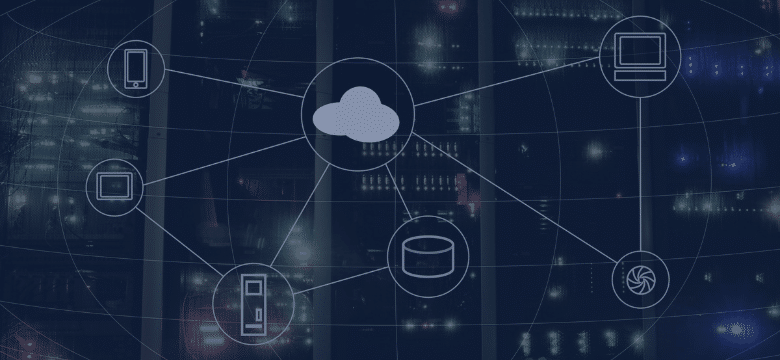Imagine a world where your insurance company doesn’t just rely on past data and questionnaires but has a real-time window into your life (with your permission, of course!). This is the exciting future that the Internet of Things (IoT) in insurance promises.
The Internet of Things refers to the ever-growing network of physical devices embedded with sensors, software, and internet connectivity. These “smart” devices collect and exchange data, creating a treasure trove of information about our homes, cars, and even our bodies. The insurance industry is starting to tap into this potential, and the implications are game-changing.
1) The Power of Real-Time Insights
Traditionally, insurance companies have relied on historical data and self-reported information to assess risk. This approach has limitations. Did you once get a speeding ticket five years ago? That might not reflect your current safe driving habits. Do you dutifully answer “no” to the question “Do you smoke?” every year? Well, an honest answer could lead to higher premiums. The Internet of Things offers a more dynamic solution. Imagine a world where:
- Auto insurers leverage telematics devices installed in cars to track driving behavior. This data can reveal how often a driver brakes harshly, exceeds the speed limit or takes long nighttime trips. Safe drivers could see significant premium reductions. (Think of it as a real-life “good driver discount”!)
- Home insurance companies partner with smart home systems that monitor water leaks, fire hazards, and even security breaches. Early detection of potential problems can prevent major damage and costly claims. Imagine the peace of mind knowing your insurance company is keeping a watchful eye (virtually) on your home, even when you’re away.
Learn more about IoT technology: How Internet of Things (IoT) Drives Business Success
2) How IoT Benefits Insurers and Customers
The benefits of IoT in insurance extend far beyond just collecting data. Let’s explore how both insurers and customers can reap the rewards:
For Insurers:
- Improved Risk Assessment: Real-time data from IoT devices allows for a more accurate and personalized risk assessment. This translates to fairer pricing models and a reduction in fraudulent claims.
- Enhanced Loss Prevention: Early detection of potential risks like water leaks or fire hazards can prevent major losses and save the insurance company money. Think of it as preventative maintenance for your insurance policy.
- Personalized Insurance Offerings: By understanding individual risk profiles based on IoT data, insurers can offer customized insurance plans. This means no more paying for coverage you don’t need!
- Streamlined Claims Processing: Imagine a world where your smart home system automatically alerts your insurance company of a water leak, and the claim process begins instantly. IoT data can streamline claim processing and improve customer satisfaction.
- Streamlined Data Collection & Processing: With streamlined IoT data, insurers will be empowered to better support their customers as they encounter issues—even anticipating where support is needed—leading to a more seamless journey overall.
For Customers:
- Potentially Lower Premiums: By demonstrating safe driving habits, responsible homeownership, or a healthy lifestyle through IoT devices, you could be rewarded with lower premiums. Safe drivers, rejoice!
- Value-Added Services: Some insurance companies are offering value-added services alongside IoT integration. These might include safety recommendations, proactive risk prevention advice, or even discounts on smart home devices.
- Improved Claims Experience: IoT data can expedite the claims process, minimizing stress and frustration for customers in the event of an incident. Imagine a faster and more efficient claim resolution thanks to your smart devices!
Interested in building your own IoT-based system? Take a look: Our Next-gen IoT Services
3) Putting IoT to Work: Real-World Examples
The possibilities for IoT in insurance are vast, and companies are already putting these ideas into action. Here are some real-world examples:
- Progressive Insurance’s “Snapshot” program uses telematics devices to track driving habits and offer discounts to safe drivers. This program has been a success, with some participants seeing premium reductions of up to 30%.
- Allstate’s “Smart Home Monitoring” program partners with smart home systems to offer discounts on home insurance policies. This program incentivizes homeowners to invest in preventative measures that can save everyone money in the long run.
- John Hancock Vitality is a health insurance program that uses wearable devices to track activity levels. Customers who maintain healthy habits can earn points towards premium reductions and other rewards. Talk about a win-win for your health and your wallet!
4) Conclusion
The Internet of Things is transforming the insurance industry, ushering in an era of data-driven risk assessment, personalized insurance options, and a more proactive approach to risk prevention. While there are questions about privacy and data security that need to be addressed, the potential benefits for both insurers and customers are undeniable.
Ready to explore the possibilities of the Internet of Things (IoT) in insurance? Contact ITC Group for a professional IoT approach to build your IoT-based insurance platform. Remember, the future of insurance is connected, and with a little planning, you can reap the rewards!








